Learn how to make this soft and chewy gluten free bread recipe! It’s easy to make without too many ingredients and too many complicated steps. If you’ve been missing bread in your gluten free diet then look no further with this recipe!
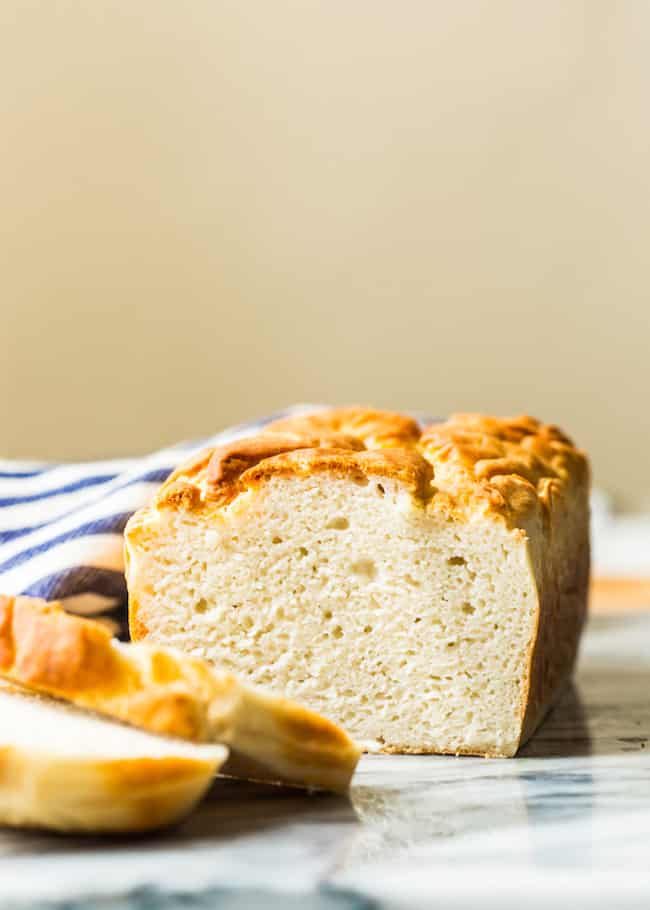
Bread
Who doesn’t love it? Fresh out of the oven, crusty, artisan bread slathered with butter, or drizzled with olive oil? Gimme all the bread.
It’s the perfect accompaniment to pretty much any main dish while also being just as satisfying on its own.
It’s also the destroyer of diets with its carb filled goodness and an actual source of pain for the millions of people who are afflicted with Coeliac Disease or gluten intolerances. Historically, gluten free breads have been…well…sad. Dry, crumbly, tasteless, not to mention expensive. Thankfully, as time goes on and the demand for gluten free products increases we’re getting better at making do sans gluten without compromising taste and texture.
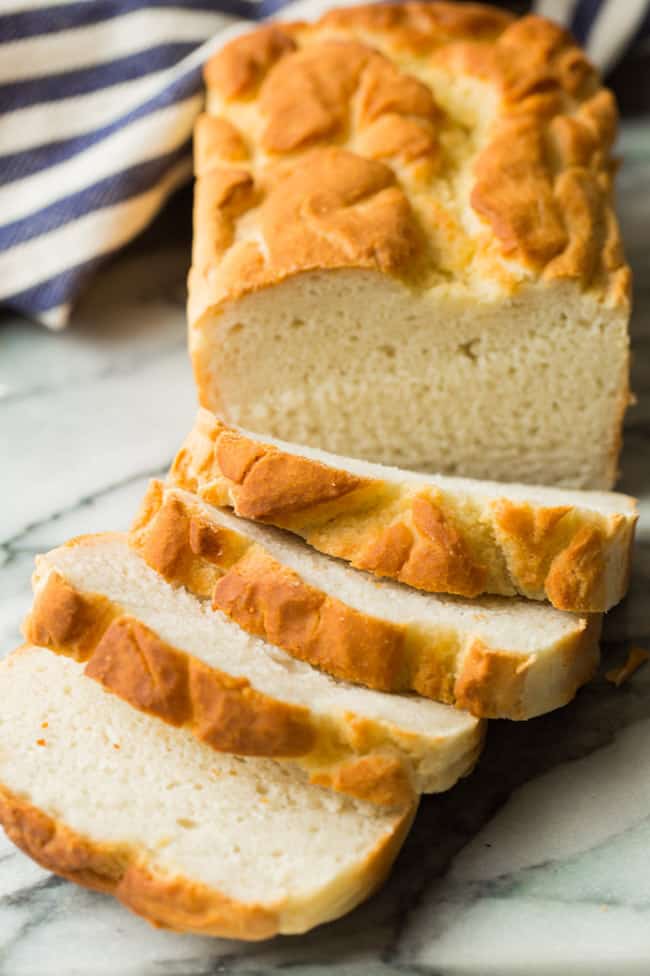
Homemade Gluten Free Bread Recipe
Altogether this bread is made up of about 10, fairly basic ingredients without too much effort.
Unlike a lot of really great gluten free recipes this bread only requires two different types of flours: rice and tapioca. Since I first made this bread years ago rice & tapioca flour have become one of my favourite combos whenever I’m looking for an easy GF flour blend (like in these Yorkshire Pudding).
Yeast Prep Steps
- Whisk together most of your dry ingredients: flours, salt, xanthan gum and baking powder. Set that bowl aside.
- Dissolve the sugar in warm water.
- You want your water to be warm to the touch, but not hot. Too hot and the heat will kill the yeast which will prevent the bread from rising.
- Stir in the yeast and then let the mixture sit aside for about 5-10 minutes as the yeast foams up.
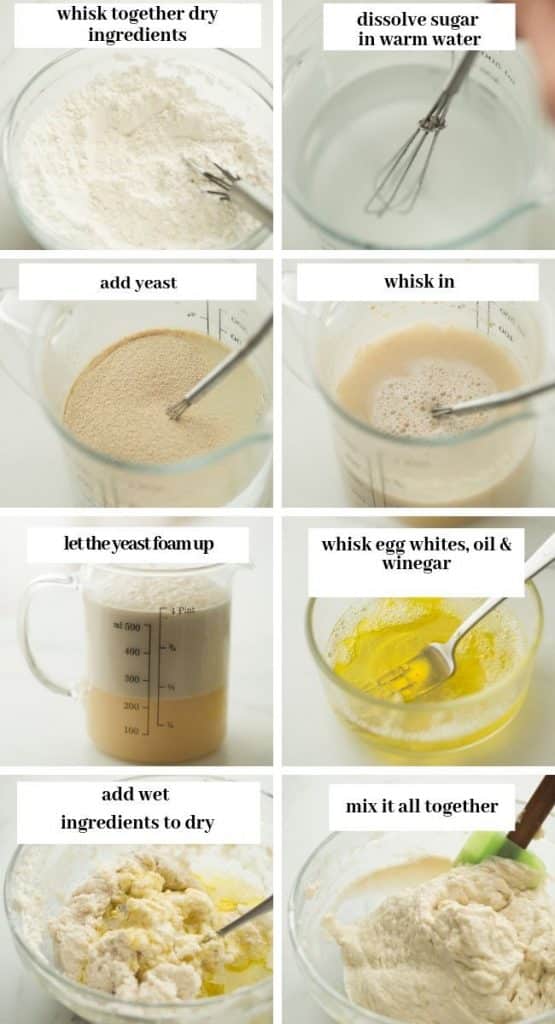
Dough Steps
- Whisk the eggs, oil and vinegar in another small cup or bowl. You don’t need to mix too much, just enough to get the egg whites slightly foamy.
- Add the yeast-mixture and the oil-mixture to the flour mixture and combine.
- The dough is going to look very wet and very unusual. As long as you mix until no lumps of flour remain you’re alright.
- Spoon the batter into a prepared loaf pan, cover and set aside in a warm place. Let rise at least 30 minutes. The bread should have risen by at least 30%.
- Place in the preheated oven and bake for 35-40 minutes. Let cool for at least 15 minutes and then enjoy!
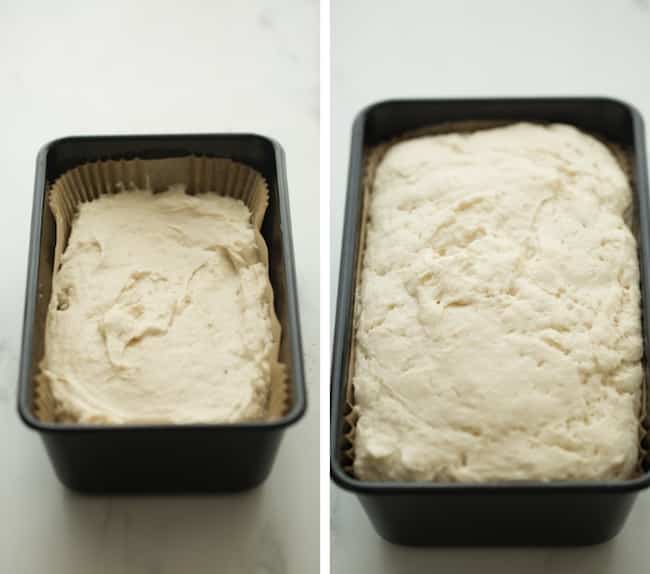
Tips
- Since there is no gluten to over work, don’t be afraid of mixing this bad boy up. If you have a stand mixer, that’s perfect. If you don’t have a stand mixer, give yourself a good arm workout and put some elbow grease into it. I tried this out with an electric handheld mixer, and while it did eventually work, I wouldn’t use it again because my dough kept getting stuck.
- The fully mixed dough will look very wet. The first time I made a gluten free dough, I was concerned I had messed up somewhere along the lines because my dough was sticky, wet, and needed to be spooned into my bread pans.
- I find this to be true with baking in general, but especially when working with yeast please make sure to use room temperature ingredients so that the yeast has the opportunity to rise properly.
Can I Make this Egg Free?
Yes! I have a Gluten Free Vegan French Bread recipe you can make! Instead of egg whites, that recipe uses aquafaba (the goopy liquid found in cans of beans). Weird, but it works!
Can I use different flours?
- You can use brown or white rice or a combination of the two.
- You can use arrowroot starch in place of tapioca flour.
- Beyond those changes I haven’t played around much with other types of flours. I do think you could probably use potato starch as well in place of the tapioca but I can’t say for sure yet. I am currently working on a grain free/paleo bread so stay tuned if you’re interested in something like that. (Update: Everything Bagel Almond Flour Bread)
Do I have to use xanthan gum?
Xanthan gum does a couple of things in this recipe: it helps hold on to moisture (something gluten free goods are often desperate for) and provides added structure which is something that gluten would normally provide. Without xanthan or some kind of binder gluten free goods can be dry & crumbly.
If you can’t buy or use xanthan you can use guar gum instead. Both of these can usually be found in the baking or gluten free section of major grocery stores. If all else fails you can always find these on Amazon.
Why didn’t my yeast mixture foam up?
Your water was too hot or too cold. Too hot will kill the yeast and too cold it won’t fully activate.
Your yeast is already dead. Yeast has a shelf life of about 4 months. It can last longer than that but there’s no guarantee. If it’s been awhile since you last used it you may need to buy more.
Can I use sugar substitutes or leave out the sugar all together?
The sugar helps us to see that the yeast is working as it’s what makes it foam up. It’s not actually 100% necessary for the bread, though a little sugar does help with the flavour. If for whatever reason you can have or don’t want to use sugar just leave it out.
- Sugar subs like erythritol & swerve won’t work for the yeast.
- Honey, maple and coconut sugar all work.
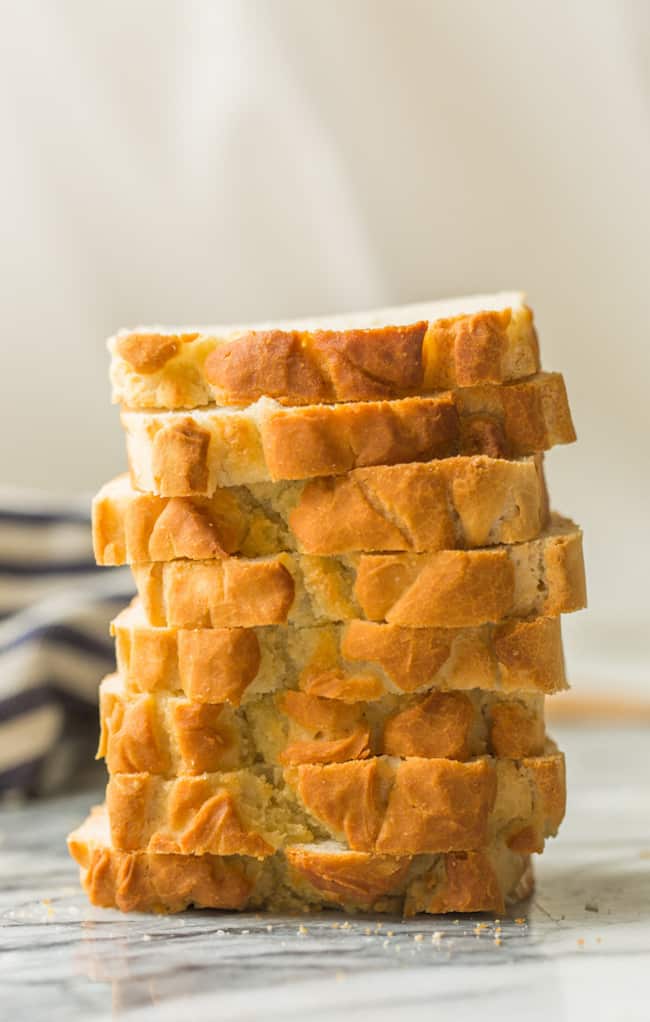
If you have any more questions please let me know in the comments below!

Easy Gluten Free French Bread
Learn how to make this soft and chewy gluten free bread! It's easy to make without too many ingredients and too many complicated steps. If you've been missing bread in your gluten free diet then look no further with this recipe!
Ingredients
- 2 cups rice flour (white or brown) (280g)
- 1 cup tapioca flour (100g)
- 2 teaspoons xanthan gum*
- 1 tablespoon gluten free baking powder
- 1 teaspoon salt
- 1 1/2 cups lukewarm water, (360ml) between 105-110 degrees F, 40-43C
- 1 tablespoons gluten free quick rise yeasts
- 2 tablespoons sugar
- 2 tablespoons olive oil
- 3 egg whites, lightly beaten
- 1 teaspoon apple cider vinegar (you can substitute for another vinegar if you don't have ACV
Instructions
- Whisk together your flours, xanthan gum, salt and baking powder.
- In another bowl or jug mix together hot water and sugar. Stir until your sugar dissolves then add the yeast. Let the yeast foam up for a few minutes.
- While the yeast is foaming up, beat together your three egg whites slightly. Mix in the oil and vinegar.
- Pour the yeast mixture to the flour mixture along with the eggs and mix it all together. Make sure to mix everything until no lumps remain.
- Grease or line 2 (8x4 inch) loaf tin or one french bread pan and spoon your batter into each tin. Cover and stash in a warm place for at least 30 minutes. I like to stow my dough in the microwave or a warmed but off oven for rising process because it keeps my dough free from drafts and disturbances.
- After your dough has risen by about 30% (about 30 minutes) preheat your oven to 400°F/ 200°C. Place in the middle and bake for 35-40 minutes, turning the dough about half way through for an even bake.
- Remove from the pan and cool on a wire rack for at least 15 minutes until you're ready to slice and serve.
Notes
Recipe lightly adapted from Food.com
Can I make it egg free?
- Yes! You can find the egg free/vegan version of this bread by clicking through to the link here.
Can I use different flours?
- You can use brown or white rice or a combination of the two.
- You can use arrowroot starch in place of tapioca flour.
- Beyond those changes I haven't played around much with other types of flours. I do think you could probably use potato starch as well in place of the tapioca but I can't say for sure.
Can I use sugar substitutes or leave out the sugar all together?
- The sugar helps us to see that the yeast is working as it's what makes it foam up. It's not actually 100% necessary for the bread, though a little sugar does help with the flavour.
- If for whatever reason you can have or don't want to use sugar just leave it out. Sugar subs like erythritol & swerve won't work for the yeast.
- Honey, maple and coconut sugar all work.
Do I have to use xanthan gum?
- Xanthan gum does a couple of things in this recipe: it helps hold on to moisture (something gluten free goods are often desperate for) and provides added structure which is something that gluten would normally provide. Without xanthan or some kind of binder gluten free goods can be dry & crumbly.
- If you can't buy or use xanthan you can use guar gum instead. Both of these can usually be found in the baking or gluten free section of major grocery stores. If all else fails you can always find these on Amazon.
Nutrition Information
Serving Size:
1 Calories: 115Total Fat: 2gSaturated Fat: 0gTrans Fat: 0gUnsaturated Fat: 2gCholesterol: 0mgSodium: 174mgCarbohydrates: 22gFiber: 1gSugar: 2gProtein: 2gMore gluten free bread recipes you might enjoy:
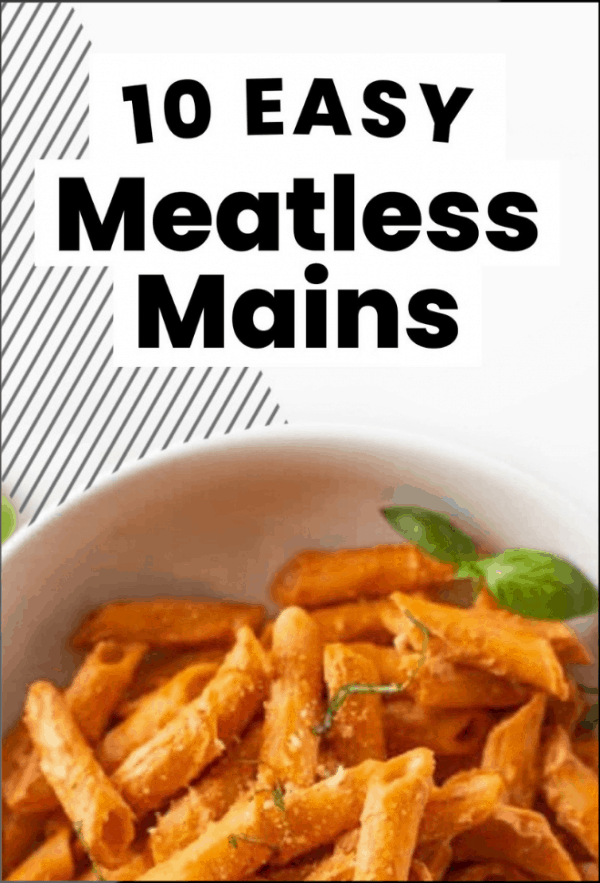

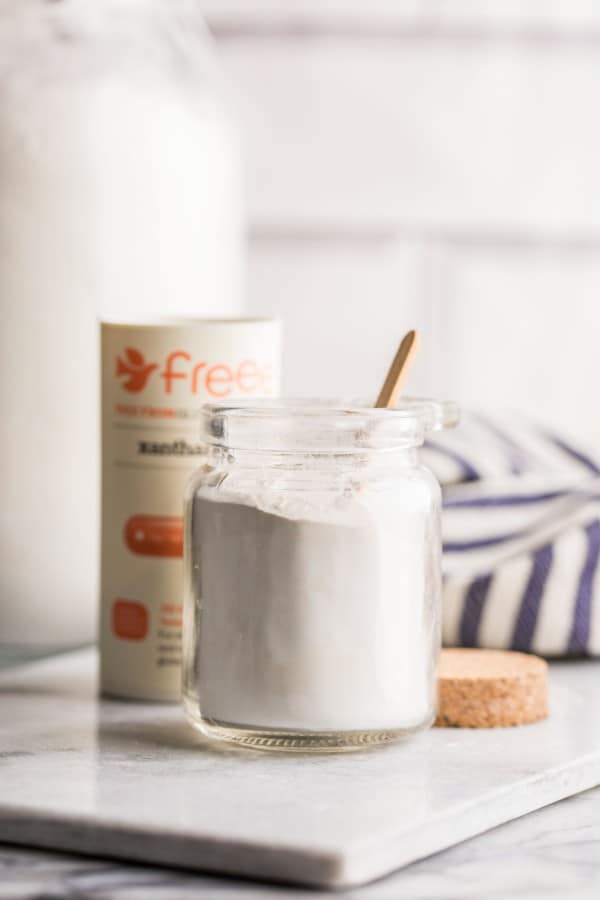
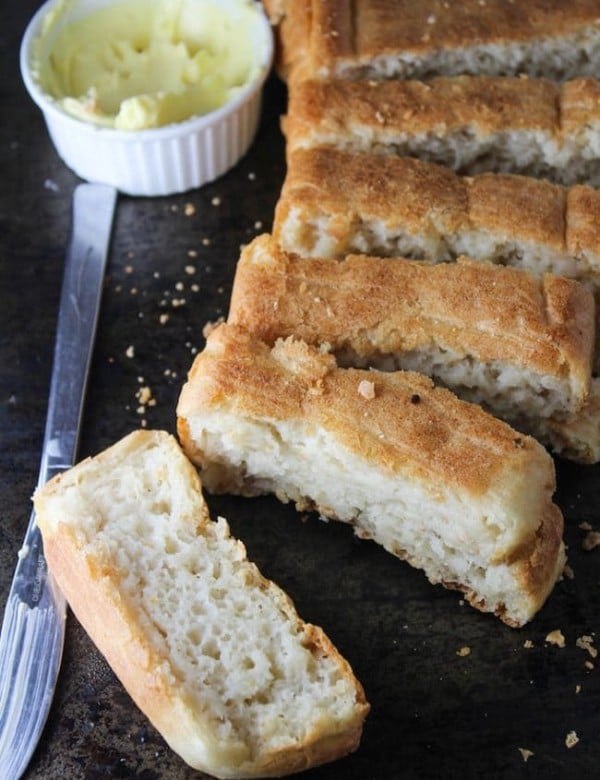
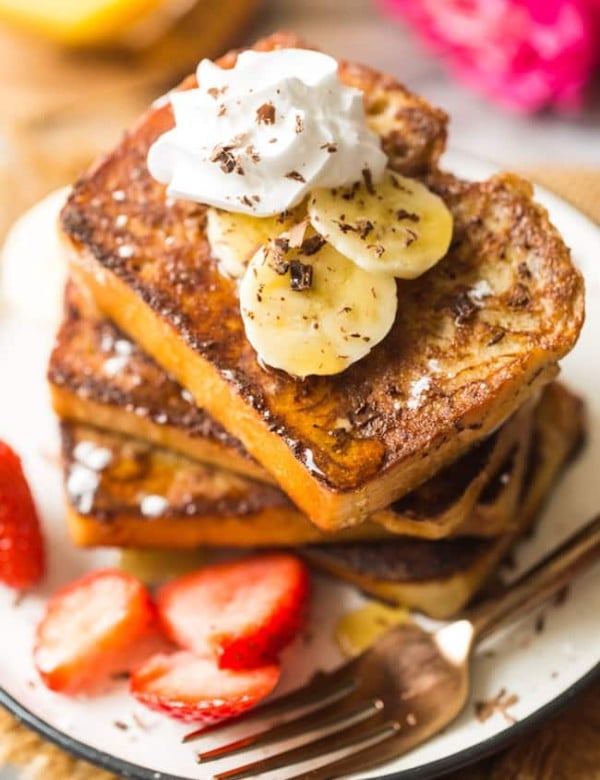
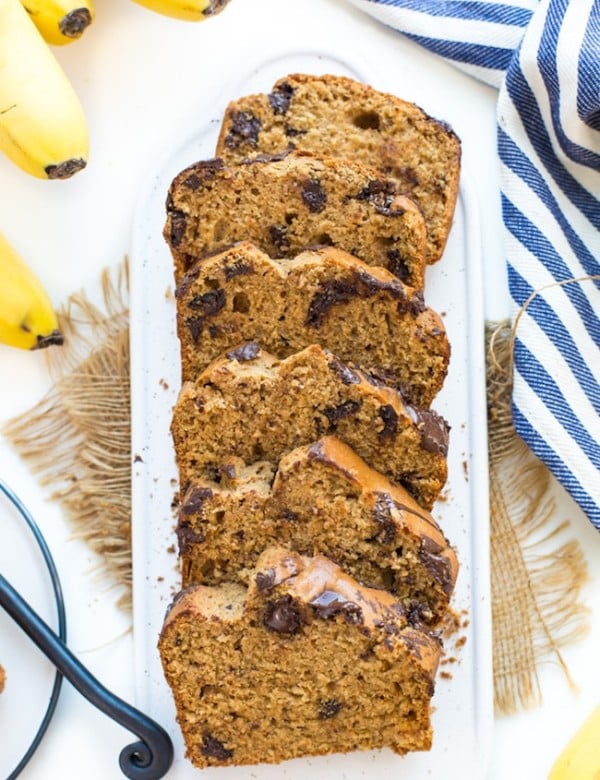
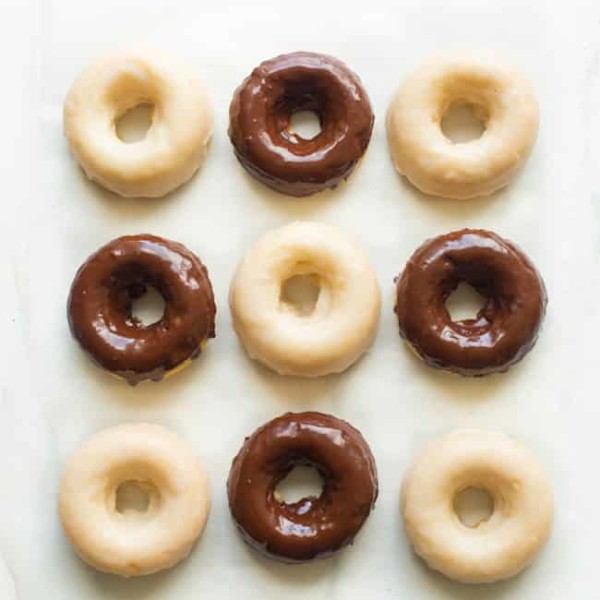
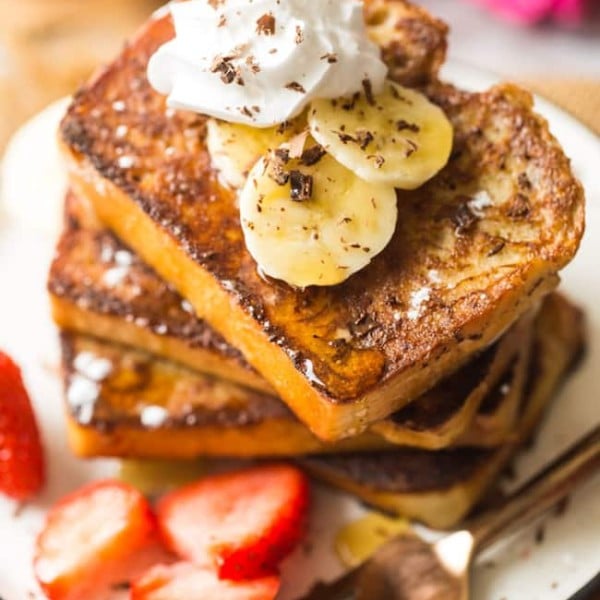
Christine says
Hello Sarah
I made your recipe today and it turned out brilliantly! I followed the recipe to the letter except for the amount of yeast. I am used to using just one sachet of yeast to this quantity of mix: here I just used a scant tablespoon of yeast today (about 12grams). It rose above the top of the loaf tin & baked beautifully with a crisp golden crust. I’ll try it next time with a bit less still. I think the yeast I use (Allinson’s) is pretty potent!
I would like to try French bread shape next time – do you favour a particular tin? Thanks.
Sarah Nevins says
Hi Christine! I’m so glad you enjoyed it! I’ve made this into baguettes using a baking tin similar to this one here: https://www.amazon.co.uk/KitchenCraft-MasterClass-Crusty-Non-stick-Baguette/dp/B00NLR3NG2/ref=sr_1_6?dchild=1&keywords=Baguette+Pan&qid=1605783561&sr=8-6 I recommend lining the baguette mould with baking paper though. This dough has the potential to fall through the little holes a lot more than a standard gluten based dough. Hope that helps!
Sofia Rodrigues says
Hi! I just found this site and subscribed it. Thank you for all the help. My question is, can I use this recipe with my bread making machine? Thank you ! 🙂
Sarah Nevins says
Hi Sofia! I’m afraid I’m not sure – I don’t really have any experience using a bread machine and I wouldn’t want to give you any wrong advice. If you do end up trying it out in the bread machine could you please let me know? Every now and then this question pops up and I’m sure it would be helpful to others to know.
Wei Wei says
Hi, I made this bread today on a 9×5 pan. After baking it was still a little sticky and hence i baked it again several times but still the stick didn’t come out clean. What could be wrong? I didn’t substitute any ingredients.
Sarah Nevins says
Hi there! Was your bread only sticky on the inside or was the outside sticky too? Usually when baked goods never get past the sticky phase it’s usually because there’s an issue with the dry-to-wet ingredient ratio. Did you use a scale to weigh your ingredients or measuring cups? Often times with measuring cups there is a lot of variation between what gets measured and what a standard cup size actually is. If you used cups that could have been a potential problem.
Another potential issue – I don’t recommend checking for doneness with this bread by inserting anything into the centre. I know that standard for things like cakes and brownies (things that are made with a batter) but with a bread like this the results can be a little misleading. A loaf of bread like this hot out the oven will have a slight natural stickiness to it (thanks to the tapioca flour). That should go as it cools though and it shouldn’t be sticky so much as moist.
One last thing that might have been an issue is oven temperature. That’s a common problem when it comes to baked goods not cooking through. If you were to make this again and the outside looks cooked while the inside isn’t, I recommend covering the bread with foil and just leaving it in the oven longer. That way the crust doesn’t get too hard while the inside finishes up.
Hope that helps!
Wei Wei says
HI! The outside was baked nicely. I used the actual measurements in your recipe. How do you recommend checking the doneness of the bread? I did cover the bread and baked again another 2 times, 10 mins each time after I baked for 35 mins initially. There are some bread sticking to the knife when I cut it. Is this suppose to be the way? I left it overnight and now it seems ok.
Sarah Nevins says
Since it’s ok after being left overnight I think it might just be that the bread needed to rest/cool for a bit. Tapioca flour can be very sticky which is probably why is stuck to the knife. The main thing you want to check is how wiggly the bread is. If the bread/dough moves around and wiggles a lot in the pan then leave it in longer. If it’s been cooking for that long and the bread doesn’t wiggle around it should be done.
Wei Wei says
Wow, ok. I’m new to baking so I will try it out next round. Just toasted the bread with cheese and it’s so moist and nice. Thanks!
Sarah Nevins says
No problem! 🙂
Wei wei says
By the way, how do you tell that the proofing is enough ?
Sarah Nevins says
Ideally you’re looking to see the dough increase in volume by about 20-30%. I try to make a mental note of where the dough sits in the pan to check back with after it’s risen. You’re really just going off of looks here because if you poke and prod the dough too much there’s a chance it might deflate before baking. If you’re not sure from just looking at it then I recommend leaving the dough to prove for a full 60 minutes – any length of time beyond that won’t make too much difference in the rise.
Richard Walker says
Absolutely amazing ….. have done a few loaves and turned out very good. One collapsed but that was because I tried to bake in clay bread oven. While covered the top does not brown the crust which does not allow the bread to hold the structure inside. Make sure top browns and gets crusty to hold inside.
Added 2 Tbps water and 2 cups grated cheese for a cheese loaf and OMG !!!
Best gluten free grilled cheese sandwiches ever !!!
Tonight is a cinnamon and raisin modification night ………..
Thank you so much for sharing this recipe with everyone.
Sarah Nevins says
Thanks Richard! That’s really helpful to know about baking in the clay oven! I am now salivating at the thought of a cheesy loaf. Cinnamon raisin is also going to go on my to do list 😀
AsianCookingMom says
Looks great! My husband recently went gluten free, so I’m still going back and forth between gluten-free and gluten recipes. Fortunately, there isn’t *too much* gluten in most asian recipes (he already misses my dumplings). Will have to try this and others that you’ve shared!
Sarah Nevins says
Ooh I know what you mean about the dumplings – I’ve yet to find a gluten free dumpling that I’m crazy about.
Hope you enjoy what you try!
Rebecca says
Hi Sarah. I’ve been making this recipe for about 3 years and I used to have fantastic success with it. I think I even left a review about it a year or so ago because I LOVED it so much. However, the last 2 or 3 times I have made it it has come out raw and doughy inside but perfectly browned on the outside. I even temp. it to make sure I’m following suggested guidelines for bread. The only thing I may have changed was the bread pan I’m using. I used a smaller ceramic one before and it would bake way up over the top. Then, I found a larger glass one and now it has been coming out raw in the middle. Any suggestions?
Sarah Nevins says
Hi Rebecca! So sorry it’s taken me awhile to get back to you – I just found your comment stuck in my spam filter! I noticed a week or two ago that my recipe listed only one loaf as the final yield instead of two. I think it might have gotten accidentally changed in an update (oops!). Next time I recommend baking this using your smaller ceramic baking pan next time instead of the larger one.
Hope that helps! Sorry again about not getting back to you sooner!
Sarah-Ann says
I’m allergic to beans, potato, guar gum, and xanthum gum (among a multitude of other things). What can I substitute for the “gum” in your gluten free flour?
Sarah Nevins says
Hi Sarah! I’ve had a couple people tell me that they used 1 tablespoon ground flax seed instead of gums here and that worked well!
Acadia says
Hi! I was super excited to make this bread, but my first loaf sank, and was overcooked on the outside and undercooked on the the inside. I thought that possibly the glass pan changed the way the bread cooked, so for the second loaf I turned the temperature down and baked it in a metal cake pan (I don’t have a metal bread pan). The bread was STILL overcooked on the outside and doughy on the inside. I cooked it for an hour trying to get the inside to cook. Sadly, I had to feed both loaves to my chickens. Do you have any suggestions of what went wrong? How could I fix this if I made it in the future? Would getting a nice metal bread pan make it cook more evenly? Thanks. P.S: I used the aquafaba instead of the egg white, if that makes a difference.
Sarah Nevins says
Hi Acadia! I’d recommend diving the loaf to cook between two pans instead of one next time. Since it’s the middle that doesn’t seem to want to cook it makes me think the pan might just be a little too full for it to cook evenly. Hope that helps!
Bailey says
My first attempt did this as well but the problem was that I pulled it too early because the top was getting so dark. I’m going to try renting it with foil this time once it starts to brown enough.
Sarah Nevins says
That’s a good idea! Hope it works out better for you next time – you could always trying lowering the temperature to about 350°F and letting it cook for longer
Julia says
Hi Sarah! Do you think this would work in a bread machine? Mine has a gluten free setting and I’m very curious to see if it’ll turn out but don’t want to waste all the ingredients! Just curious what you’re thoughts are. Thanks!
Sarah Nevins says
Hi Julia! I’m afraid I don’t know. I don’t really have much experience using bread machines so I’m just not sure how it would work. Sorry I couldn’t be more help here!
Karen says
Hi there,
I’m a bit confused, is the recipe for two loaf pans or one? I have an 8*4 Pain de Mie pan, and while waiting for the dough to rise it’s overflowing. Wondering if I didn’t get something in step #5 which seems to refer to two pans, or maybe the GF flour mix I’m using caused it.
Thanks,
Karen
Sarah Nevins says
Hi Karen! I used to recommend using two pan but I changed it to one because I didn’t think the loaves ever really got tall enough when divided. Unless your dough overflowed to the point of spilling out of the sides I wouldn’t worry too much about it. If it is spilling out then you can always use two loaves (or use a baguette pan)
Angela Hoy says
I made this bread last week and it worked very well, my daughter loved it too. However, you mention baking powder in the Method but not in the ingredients – I added a teaspoon and it worked ok. It rose so much it overflowed the tin, I shall used a bigger one next time!
Sarah Nevins says
Hi Angela! So glad you liked it! The baking powder is listed underneath the xanthan gum – you were right to add 1 teaspoon though so all good!